Introduction to Autism Spectrum Disorder and Common Misconceptions
Autism Spectrum Disorder (ASD) is a complex neurodevelopmental condition characterized by challenges with social communication and repetitive behaviors. It affects individuals worldwide, with an estimated prevalence of about 1 in 127 persons as of 2021. Despite increasing awareness, misconceptions about autism’s origins persist, particularly myths concerning environmental causes such as radiation exposure. This article aims to explore the scientific understanding of autism’s causes, with an emphasis on research-based evidence on environmental and genetic factors, and dispel unfounded fears related to radiation. Furthermore, it will outline the role of behavioral therapies such as Applied Behavior Analysis (ABA) in supporting individuals with autism.
The Current Understanding of Autism's Origins
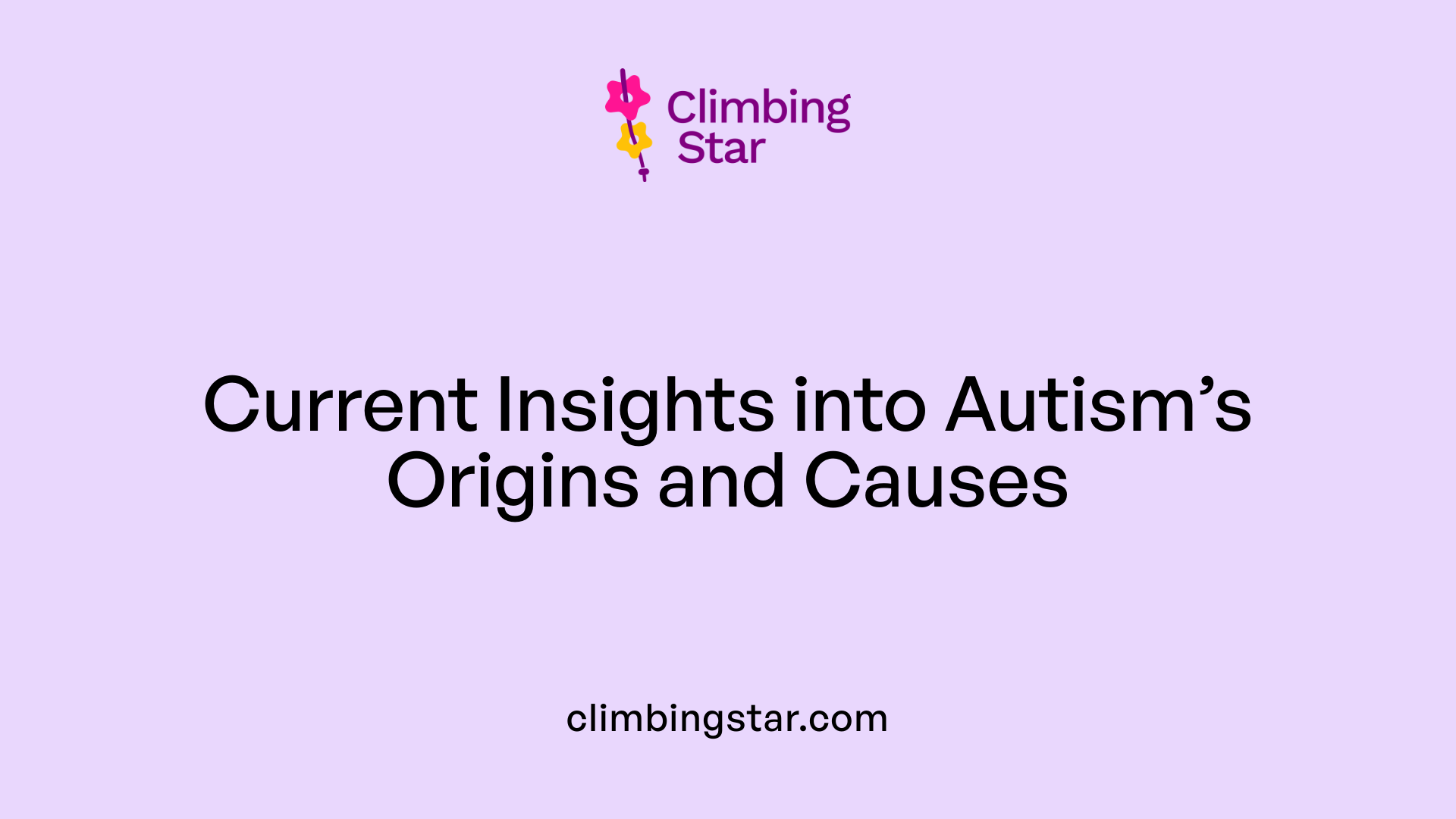
Genetic and Environmental Influences on Autism
Autism spectrum disorder (ASD) develops from a complex interaction between genetic and environmental factors. Genetic influences account for approximately 60-90% of autism risk and involve changes in genes affecting brain development and neural communication. Many of these gene changes are inherited, meaning parents can pass them on even without having autism themselves.
Environmental factors also play a role, particularly those affecting early brain development. Such factors include advanced parental age, prenatal exposure to pollutants or pesticides, maternal obesity and diabetes, immune system disorders, and birth complications such as oxygen deprivation. Additionally, maternal exposures like smoking, fever during pregnancy, and certain biomarkers linked to environmental toxins have been associated with altered ASD risk. However, these environmental influences increase risk probabilistically rather than directly causing autism.
Prevalence Rates and Gender Differences
Globally, about 1 in 127 people are estimated to have autism. In a large Japanese study of over 84,000 mother-child pairs, the prevalence of ASD at age 3 was approximately 0.4%. Boys are roughly three times more likely than girls to receive an ASD diagnosis, a pattern consistent across populations. These figures reflect the variability in neurodevelopment and underscore the importance of early screening and intervention.
Does Radiation Cause Autism?
Current scientific research does not support a causal link between radiation exposure and the development of autism spectrum disorder. The origins of autism arise from a complex interplay of genetic predispositions and environmental factors; however, radiation has not been identified as a contributing factor in ASD etiology. Research instead focuses on other environmental exposures such as chemical pollutants and maternal health conditions.
Overall, the origins of autism are multifaceted and not attributable to a single cause. Understanding the interaction between inherited genetic factors and various prenatal and early-life environmental exposures remains a focus of ongoing research to better inform prevention and intervention strategies.
Genetic Contributions to Autism Spectrum Disorder
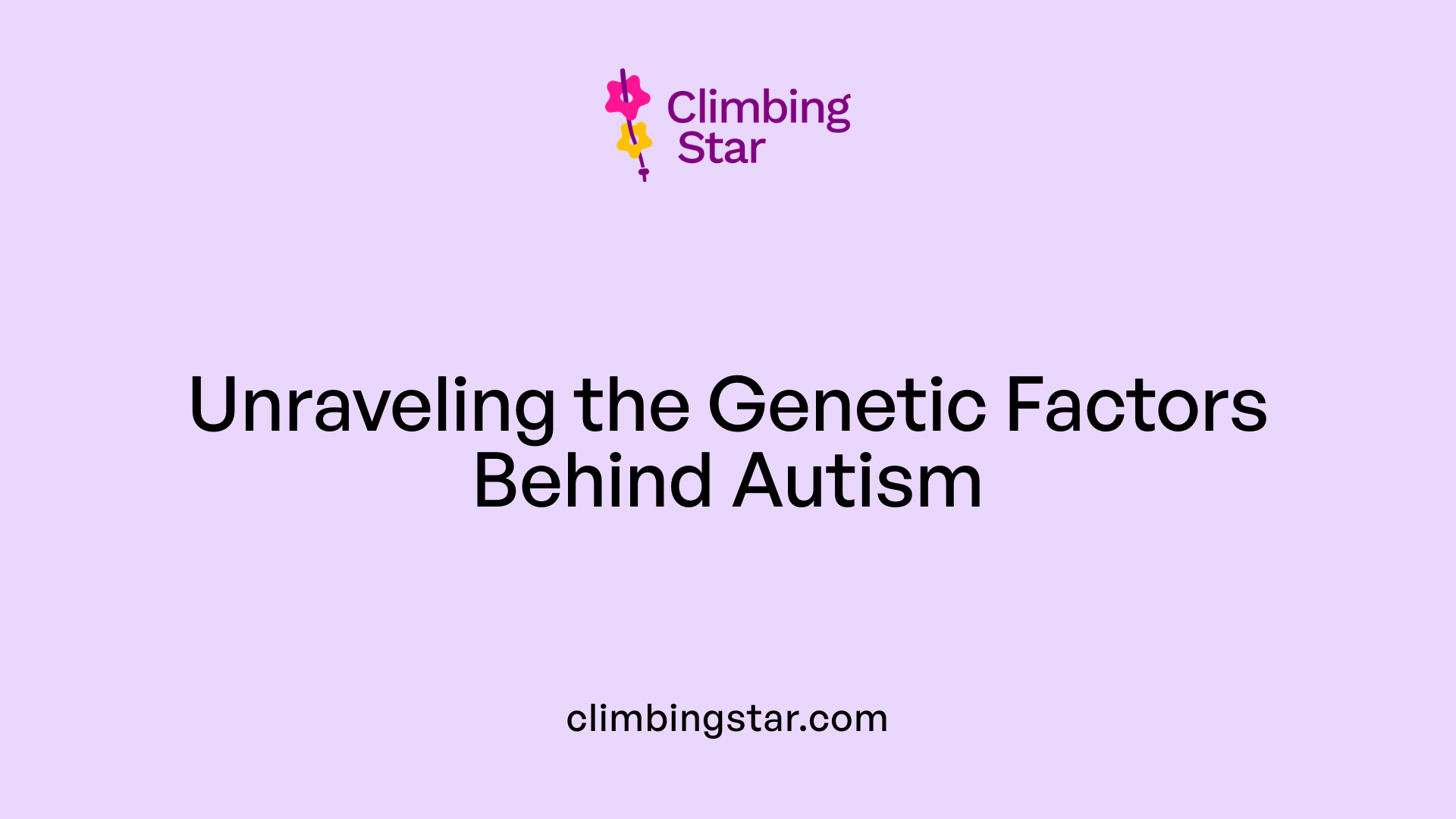
What genetic factors influence autism?
Autism spectrum disorder (ASD) has a strong genetic basis. Research estimates that 60 to 90% of the risk for autism comes from an individual's genetic makeup. This means that genetics plays a major role in how likely a person is to develop ASD.
Many gene changes related to autism affect brain development and neural communication. These gene variations influence how neurons form connections and interact, critical processes during early brain growth. Alterations in these genes can disrupt neural networks, contributing to the characteristics seen in ASD.
Importantly, most of these genetic changes are inherited from parents. Often, parents may carry genes linked to autism without showing symptoms themselves, yet they can pass these risk factors to their children. This inherited genetic risk helps explain why autism frequently runs in families.
Understanding these genetic contributions is vital for unraveling autism’s complex origins. It provides insight into why some individuals develop ASD and highlights the interplay between genetics and environment. Ongoing research continues to identify specific genes and mutations involved, improving diagnostic and therapeutic approaches.
Environmental Influences Linked to Autism Risk

What environmental factors are associated with autism?
Autism risk is influenced by numerous environmental factors that mainly affect early brain development. These include prenatal exposures to pollutants like air pollution and pesticides, which may interfere with neural network formation. Maternal health conditions such as obesity, diabetes, immune system disorders, and psychiatric illnesses during pregnancy also contribute to increased risk.
Birth complications, including extreme prematurity, very low birth weight, and oxygen deprivation at birth, are additional environmental influences linked to autism. These challenges can disrupt early neural communication pathways critical for typical development.
Prenatal exposures such as pollution and toxins
Exposure to environmental toxins during pregnancy, such as heavy metals (arsenic, lead, cadmium), endocrine-disrupting chemicals (e.g., trans-nonachlor), and pesticides, has been associated with heightened autism risk. Certain maternal biomarkers and placenta epigenetic modifications have been identified, suggesting complex interactions between these exposures and the genetic makeup that influence ASD development.
Maternal health factors
Several maternal health conditions play a role in autism risk. Diabetes, polycystic ovary syndrome (PCOS), hyperandrogenemia, depression, and psychiatric disorders during pregnancy have all been linked to increased susceptibility in offspring. These conditions may impact fetal brain development and immune function, contributing to ASD susceptibility.
Birth complications
Complications such as premature birth, low birth weight, and birth events leading to oxygen deprivation can affect critical periods of brain development. These events may increase the likelihood of ASD by disrupting the maturation of neural circuits necessary for social and communicative functions.
Although these environmental factors are associated with greater autism risk, they do not directly cause autism. Many children exposed to these influences do not develop ASD. This highlights autism's multifactorial nature, involving interactions between genetic predispositions and environmental exposures.
Screen Time in Infancy and Autism Risk in Boys
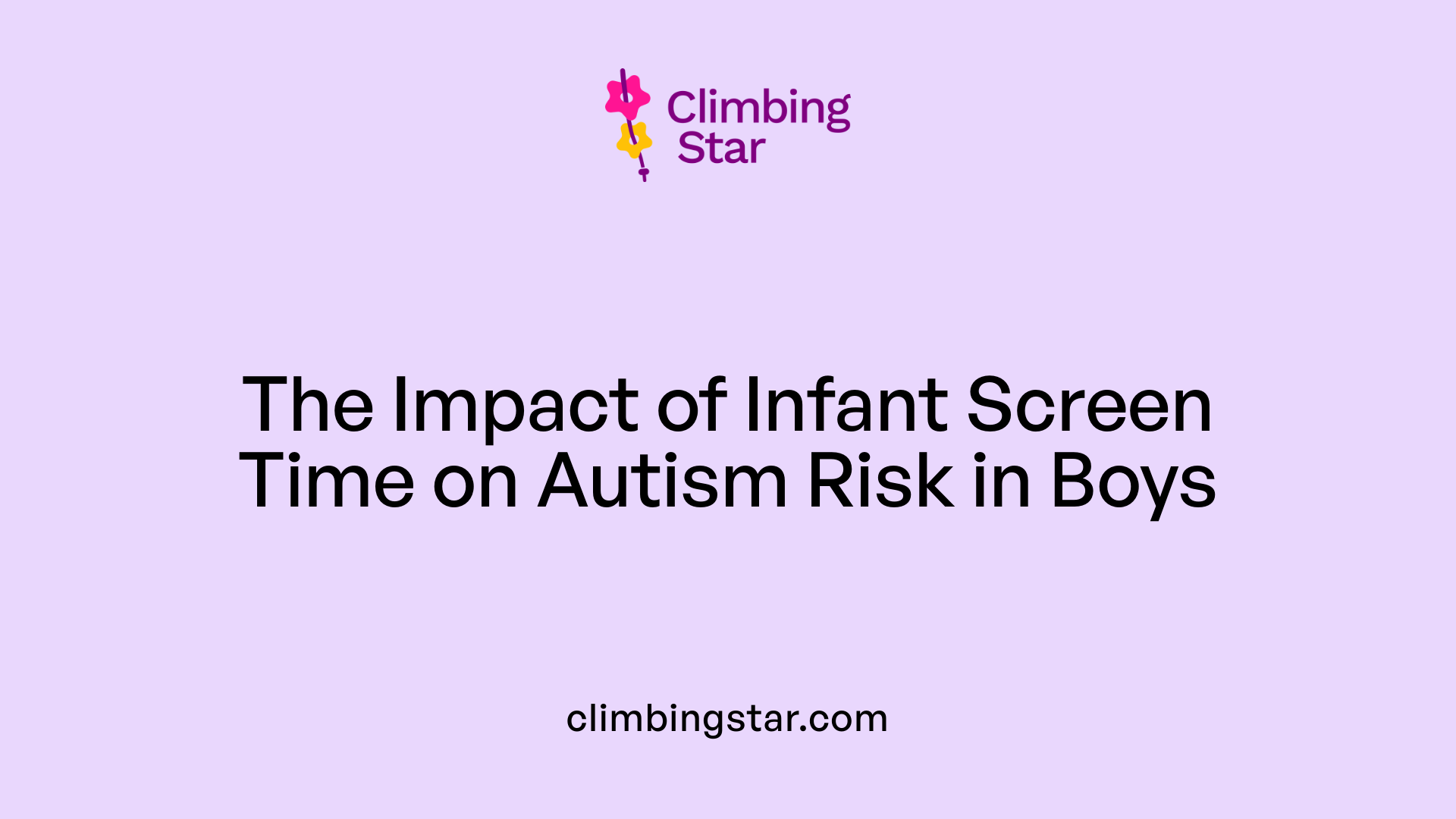
Research findings on screen exposure at age 1
A large-scale study from Japan analyzed data from more than 84,000 mother-child pairs to investigate links between screen time at age 1 and autism spectrum disorder (ASD) diagnoses by age 3. The research revealed that boys exposed to longer daily screen time at 1 year were significantly more likely to be diagnosed with ASD at 3 years old. This finding underscores a possible early environmental influence on autism risk.
Dose-response relationship
The study found a clear dose-response pattern among boys: those with less than 1 to 2 hours of screen time had an adjusted odds ratio of 1.81 for ASD compared to boys with no screen time. The odds rose to 2.87 for 2 to 4 hours and slightly decreased to 2.64 for those exceeding 4 hours. This gradient suggests that increased screen exposure duration correlates with greater autism risk.
Consideration of maternal and child factors
Importantly, these associations remained significant even after adjusting for maternal factors such as mental health status and the child’s developmental predisposition assessed by standardized screening tools. This indicates that screen time independently contributes to ASD risk aside from these established influences.
Is there evidence linking infant screen time to autism?
Yes, this robust study provides important evidence linking prolonged screen time in infancy, particularly in boys, to increased autism risk. While genetic and other environmental factors play major roles in ASD development, the findings highlight the importance of carefully managing screen exposure during critical early developmental periods.
Parents and healthcare providers should consider these results in the context of existing guidelines that recommend limiting screen time for infants to support healthy neurodevelopment. Further research is encouraged to explore causal mechanisms and develop targeted intervention strategies.
Debunking Vaccine and Radiation Myths

Do vaccines or radiation cause autism?
Extensive studies conducted over decades have consistently found no scientific evidence linking vaccines to autism. Vaccines, including those containing ingredients like thiomersal or aluminum, have been thoroughly evaluated and shown not to increase the risk of autism spectrum disorder (ASD). This conclusion is supported by large-scale epidemiological research and remains one of the most robust findings in autism science.
Radiation exposure, likewise, has no established connection to the development of autism. Although some environmental factors have been studied for their potential role in ASD, radiation has not been identified as a risk factor by scientific research.
Importance of dispelling misinformation
Dispelling myths about vaccines and radiation is essential for several reasons. First, misinformation can fuel fear and hesitance around vaccinations, which are critical for preventing serious infectious diseases. Second, incorrect beliefs contribute to social stigma surrounding autism, affecting how individuals and families are treated by society.
By clarifying these misconceptions, public health efforts can focus on accurate causes and effective interventions for autism, such as early psychosocial support and addressing verified environmental and genetic risk factors. Promoting trust in science and healthcare also improves community acceptance and inclusion of autistic individuals, ensuring they receive the resources and support they need.
Role of Biomarkers and Epigenetics in Autism Research
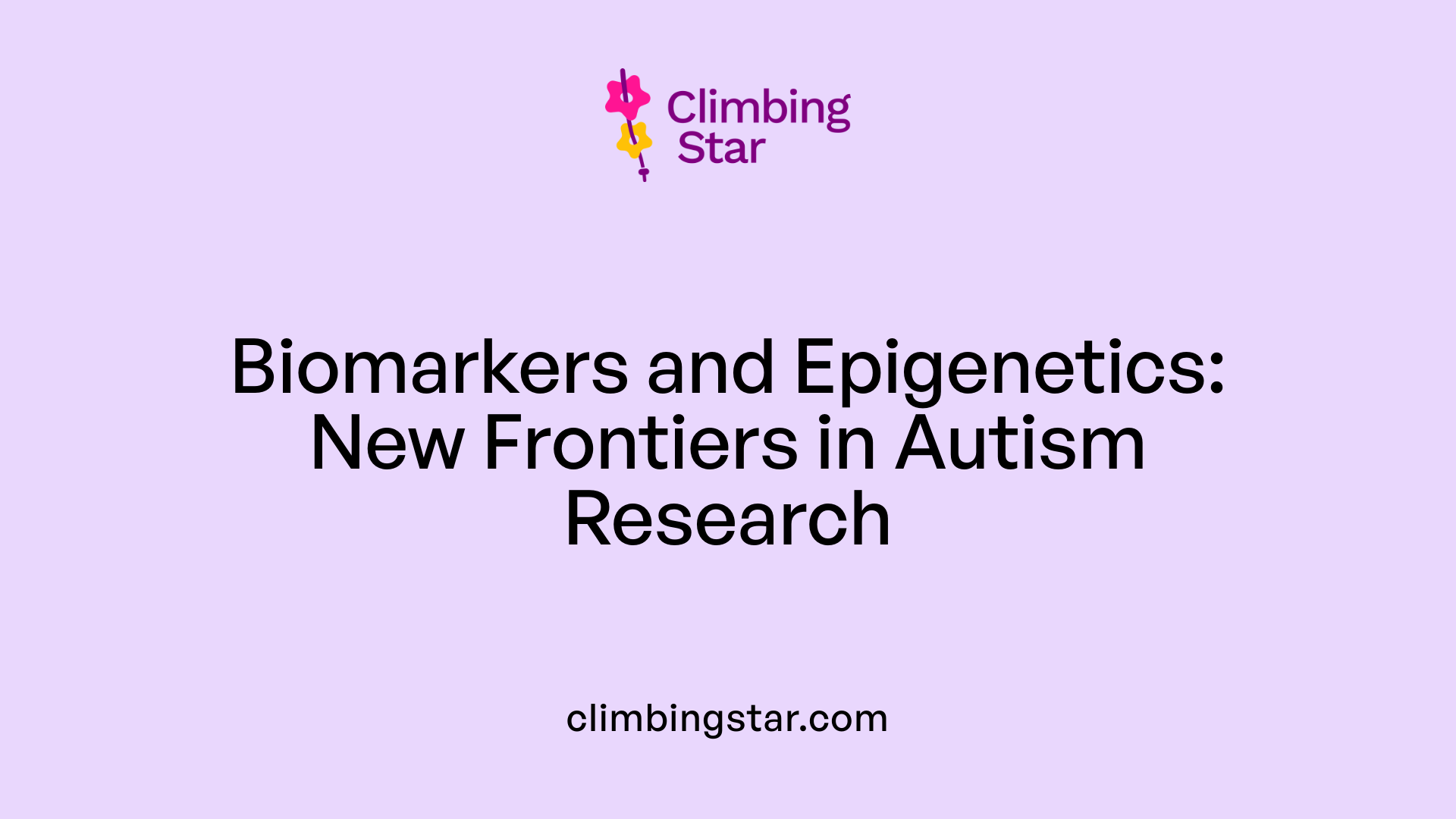
How do biomarkers and epigenetics relate to autism risk?
Research has increasingly pointed to the role of biomarkers and epigenetic changes in influencing autism spectrum disorder (ASD) risk. Placental epigenetic modifications, especially differentially methylated regions (DMRs), have emerged as crucial indicators. These DMRs in the placenta can affect gene expression related to brain development and neural connectivity, which are vital factors in ASD etiology.
Maternal genetic variations and their influence
Certain maternal genetic variations, such as PON1 genotypes, have been linked to how environmental exposures impact the risk of ASD in offspring. These genetic factors may modify the body's ability to detoxify environmental toxins, thereby influencing the severity or likelihood of autism development.
Maternal biomarkers including endocrine disruptors
Biomarkers like endocrine-disrupting chemicals (e.g., trans-nonachlor) found in maternal blood have been associated with increased ASD risk. Additionally, specific maternal metabolites, such as ornithine and 1-methylhistidine, serve as biological indicators correlated with autism outcomes. These biomarkers provide insight into how maternal exposures before or during pregnancy can influence neurodevelopment in the child.
Together, these findings support the importance of integrating genetic, epigenetic, and environmental data to better understand the complex origins of ASD. They also highlight the potential of biomarkers in early prediction and intervention strategies to improve outcomes for autistic individuals.
Influence of Maternal Health and Exposures During Pregnancy
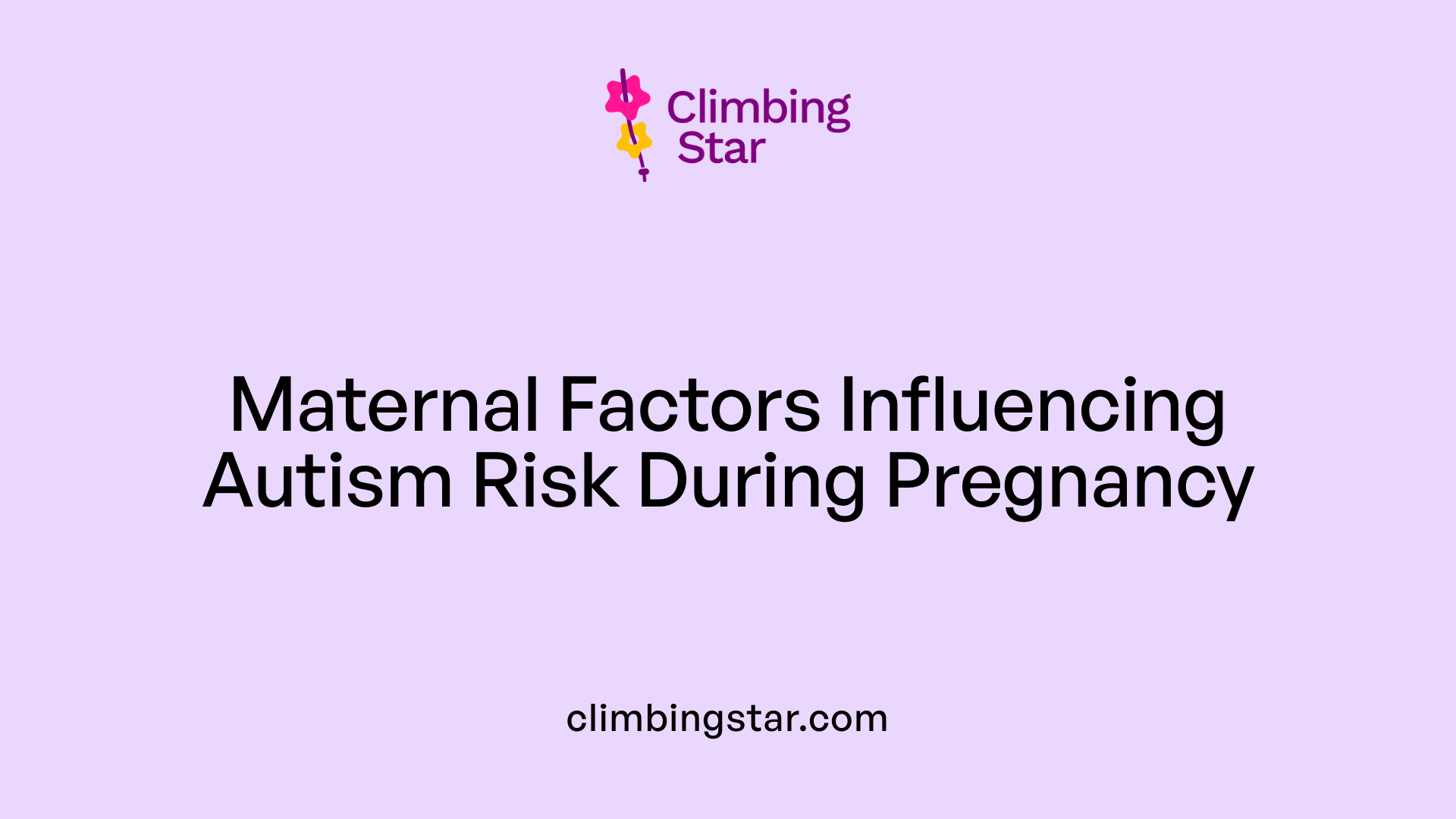
What maternal factors during pregnancy increase autism risk?
Maternal health and environmental exposures during pregnancy play a significant role in shaping autism risk in children. Psychiatric disorders such as maternal depression have been linked with an increased likelihood of autism spectrum disorder (ASD) in offspring. These mental health challenges during pregnancy can influence fetal development and contribute to neurodevelopmental outcomes.
Exposure to certain environmental toxins is another important aspect. Heavy metals like arsenic, cadmium, chromium, and lead, as well as low levels of manganese, are associated with higher ASD risk. Similarly, prenatal exposure to pesticides, including indoor household pesticides, correlates with an increased chance of autism diagnosis in children. Maternal smoking and instances of fever during pregnancy further elevate this risk.
Chronic maternal illnesses also contribute to the complexity of autism risk. Conditions such as diabetes, polycystic ovary syndrome (PCOS), and hyperandrogenemia during pregnancy are linked to increased chances of ASD in offspring. These illnesses can affect early brain development, potentially disrupting neural networks.
This confluence of psychiatric, chemical, and physiological maternal factors illustrates how the prenatal environment critically intersects with genetic susceptibilities to influence autism development. Understanding these influences highlights the need for comprehensive prenatal care that addresses both mental health and environmental exposures to mitigate risks.
| Maternal Factor | Associated ASD Risk Impact | Notes |
|---|---|---|
| Psychiatric disorders (e.g., depression) | Increased ASD risk | Mental health affects fetal neurodevelopment |
| Heavy metals (arsenic, cadmium, lead, chromium) | Higher likelihood of autism | Toxic exposures disrupt brain development |
| Pesticides | Elevated ASD risk | Includes both outdoor and indoor pesticide exposure |
| Maternal smoking | Increased autism risk | Affects fetal oxygen and brain growth |
| Maternal fever during pregnancy | Higher ASD likelihood | Potential immune and developmental disruption |
| Maternal diabetes and PCOS | Increased risk of ASD | Metabolic and hormonal imbalances impact development |
Interpreting Autism Prevalence Trends and Diagnostic Changes
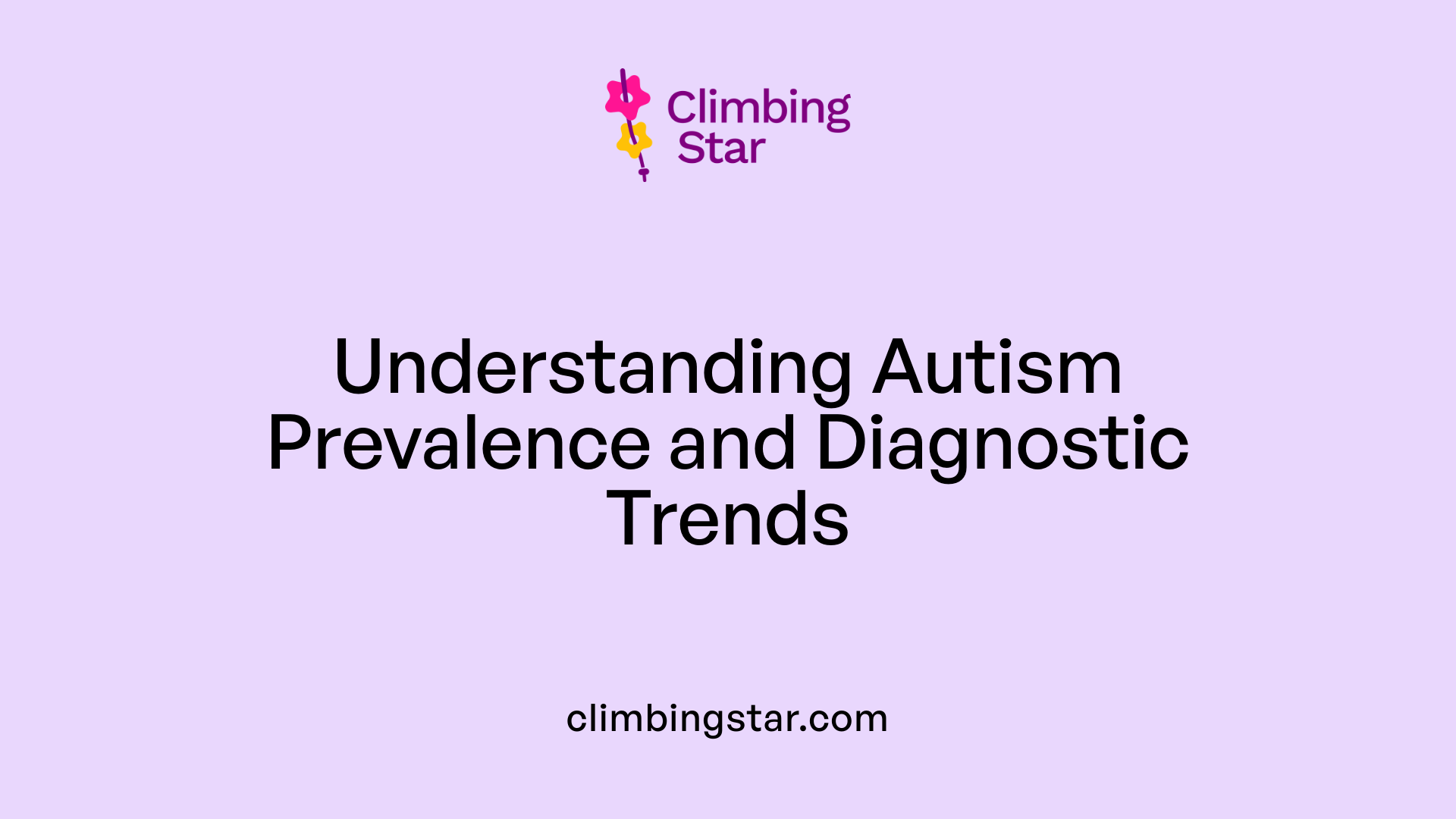
Why are autism rates increasing?
The observed rise in autism prevalence over recent decades is not necessarily due to a true increase in the number of individuals with autism spectrum disorder (ASD). Instead, it largely results from several factors that improve identification and reporting.
Impact of broader diagnostic criteria and awareness
Diagnostic criteria for ASD have expanded to include a wider range of behaviors and severities, which means more individuals now meet the threshold for diagnosis. Enhanced screening tools and greater awareness both among health professionals and the public also contribute to increased detection of autism during early childhood.
These changes mean children who might have been missed or labeled under different developmental conditions in the past are now correctly diagnosed with ASD. Consequently, prevalence rates appear higher, reflecting better identification rather than an actual spike in autism cases.
No evidence for actual increase in autism cases
Decades of research have found no conclusive evidence that the genuine incidence of autism is growing. The increase in reported cases is consistent with more comprehensive and sensitive diagnostic practices rather than a rise in new autism occurrences.
Understanding these trends helps clarify that the apparent rise in autism prevalence reflects progress in recognizing and supporting individuals with ASD rather than a worsening public health threat.
Characteristics and Variability of Autism Spectrum Disorder
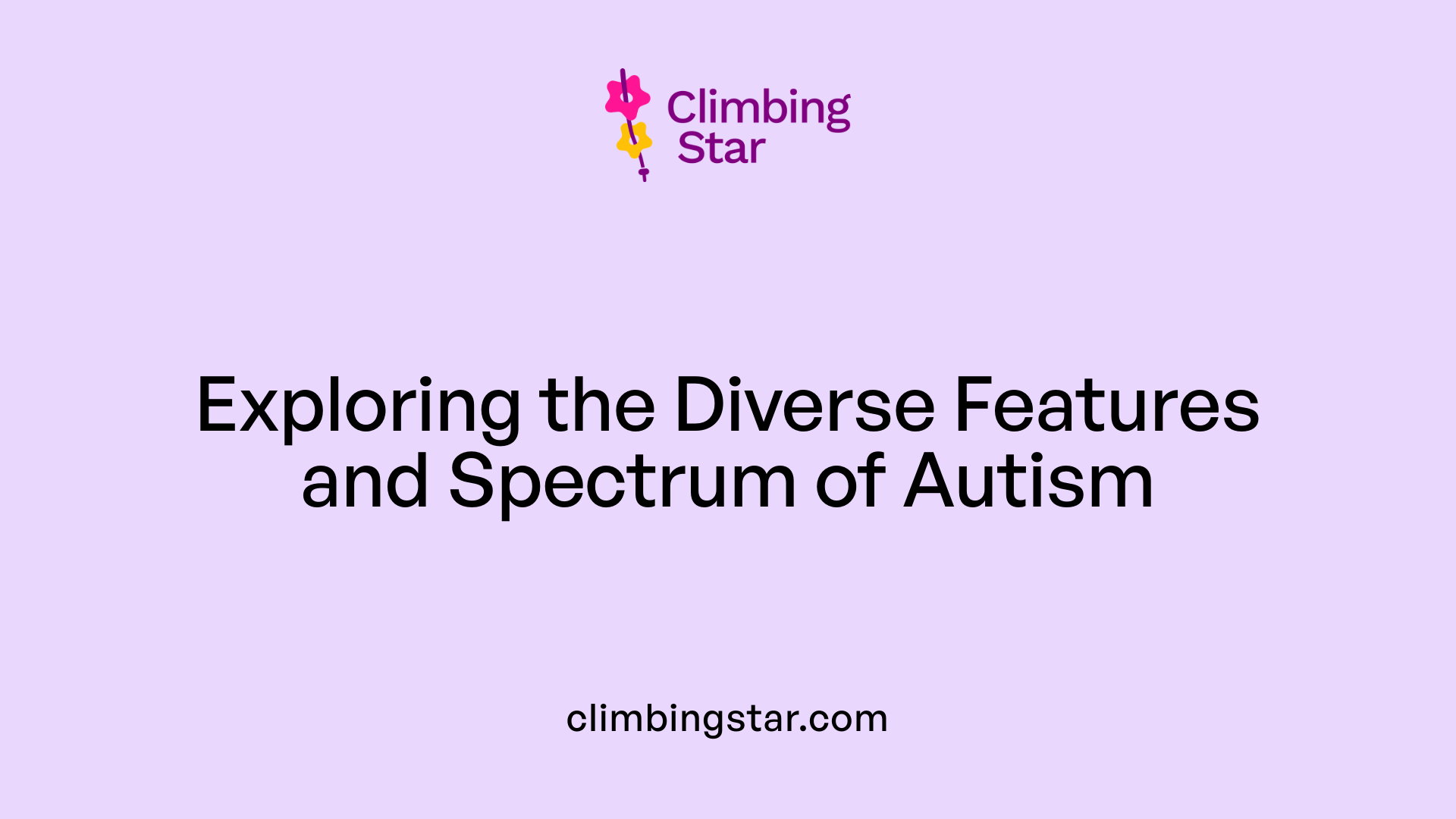
What are the main features and variability of autism?
Autism Spectrum Disorder (ASD) is primarily characterized by challenges in social interaction and communication. Individuals with ASD often experience difficulties understanding social cues, expressing themselves verbally or nonverbally, and engaging in typical social behaviors. Additionally, ASD involves atypical activities and behaviors such as resistance to change, intense focus on specific details, and unusual sensory reactions like heightened sensitivity to sounds or textures.
The spectrum nature of autism means that abilities and needs vary greatly among individuals. Some autistic people develop skills that allow them to live independently and pursue education or careers, while others may require lifelong support due to more profound challenges. This variability reflects the wide range of cognitive, emotional, and behavioral differences within the autistic community.
Co-occurring conditions are common in people with ASD. Epilepsy affects many autistic individuals, increasing the risk of seizures. Mental health challenges, including depression and anxiety, frequently accompany ASD, sometimes exacerbating social and communication difficulties. Attention Deficit Hyperactivity Disorder (ADHD) is another condition that often presents alongside autism, influencing attention and activity levels.
Understanding the diverse characteristics and support needs of autistic individuals is essential for providing effective care and interventions. Tailored psychosocial strategies can improve communication and social skills, enhancing quality of life and well-being for those on the spectrum.
Applied Behavior Analysis (ABA) Therapy Explained

What is Applied Behavior Analysis (ABA) therapy and how is it used in treating autism?
Applied Behavior Analysis (ABA) therapy is a scientifically validated method that studies how behaviors are influenced by environmental factors. It focuses on increasing positive behaviors such as communication, social interaction, and functional skills while decreasing harmful or interfering behaviors.
Definition and principles of ABA
ABA is grounded in the principles of behavioral psychology, emphasizing the role of reinforcement in shaping behaviors. By understanding how behaviors are acquired and maintained, ABA therapists develop strategies to encourage desirable behaviors and reduce those that may impact quality of life.
Techniques used in ABA
ABA employs various techniques, including positive reinforcement, behavior analysis, Discrete Trial Training (DTT), and Pivotal Response Treatment (PRT). These methods are designed to break down skills into manageable steps and motivate learning through rewards and consistent feedback.
Individualized treatment plans
Treatment plans in ABA are tailored to meet the unique needs of each individual, considering their abilities, challenges, and family environment. These plans often involve intensive, systematic sessions over extended periods to maximize developmental outcomes.
ABA therapy is a cornerstone in supporting autistic individuals to improve communication, social skills, and independence, ultimately enhancing their well-being and quality of life.
Providers of ABA Therapy for Autism

Who typically provides ABA therapy for individuals with autism?
ABA (Applied Behavior Analysis) therapy is primarily delivered by trained and certified professionals. These include Board Certified Behavior Analysts (BCBAs), Assistant Behavior Analysts, and other behavioral specialists. Many of these providers hold advanced degrees in psychology, education, or related fields, ensuring they have the expertise necessary to tailor interventions to each individual's unique needs.
Types of professionals offering ABA
- Board Certified Behavior Analysts (BCBAs): Lead and design ABA programs.
- Assistant Behavior Analysts: Support BCBAs in implementation and data collection.
- Behavioral Technicians or Therapists: Deliver daily intervention sessions under supervision.
Settings for ABA treatment
ABA therapy can be delivered across diverse settings to best fit the needs and comfort of the individual, including:
- Clinics or specialized centers: Controlled environments with structured programs.
- Homes: Offering naturalistic settings for skill generalization.
- Schools: Integrating therapy within educational curricula.
- Community settings: Supporting social skills and real-world functioning.
Role of specialized companies
Many companies specialize in autism behavioral interventions, providing comprehensive ABA services that cover assessment, individualized program development, ongoing therapy, and training for families and caregivers. These organizations often employ multidisciplinary teams to ensure a holistic approach to therapy.
Together, these providers and settings ensure that ABA therapy is accessible, flexible, and tailored to support the developmental progress and quality of life of individuals on the autism spectrum.
Goals of Autism Therapy Using Behavioral Analysis
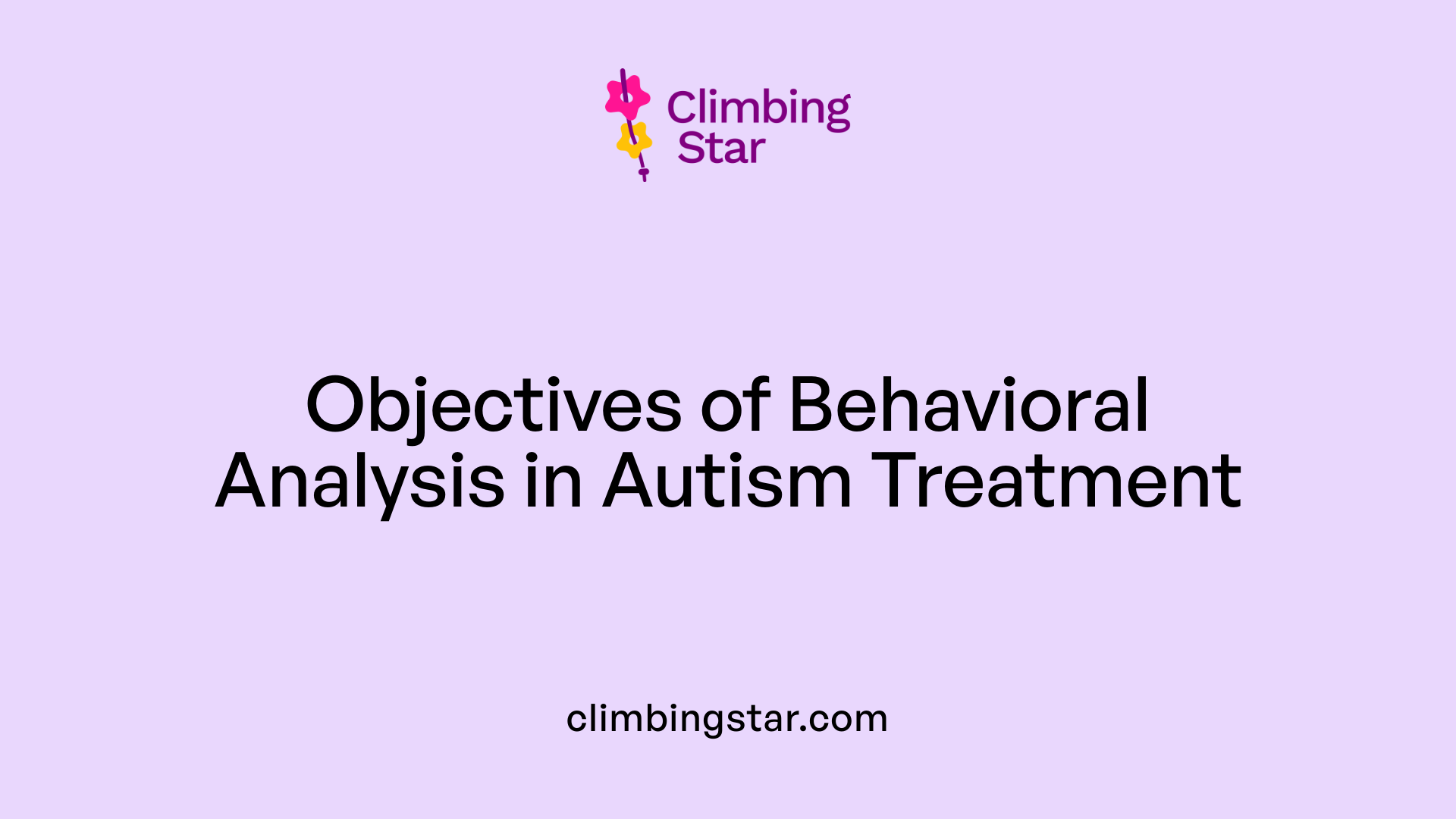
What are the main goals of autism therapy using behavioral analysis?
Autism therapy that employs behavioral analysis focuses on several important objectives aimed at improving the lives of autistic individuals. A crucial goal is enhancing language, social, and daily living skills. By increasing communication abilities and social interactions, therapy empowers individuals to engage more effectively with their environment and communities.
Another major goal is to reduce problematic behaviors that may interfere with learning or socialization. These behaviors are targeted and managed through evidence-based interventions to create a more supportive learning atmosphere.
Therapy also prioritizes promoting independence. The aim is to help individuals develop skills that allow them to function autonomously in everyday situations, boosting their quality of life.
Each autism therapy plan is personalized, reflecting an individual’s specific strengths and challenges. It strives to cultivate functional, generalizable skills, meaning the skills learned can be applied across various settings and situations. Early and intensive intervention is often recommended to maximize outcomes.
In summary, behavioral analysis-based autism therapy seeks to increase communication, social, academic, and daily living skills while decreasing behaviors that hinder progress. This comprehensive approach supports autistic individuals in leading more independent and fulfilling lives.
Measuring ABA Therapy Effectiveness in Autism Treatment
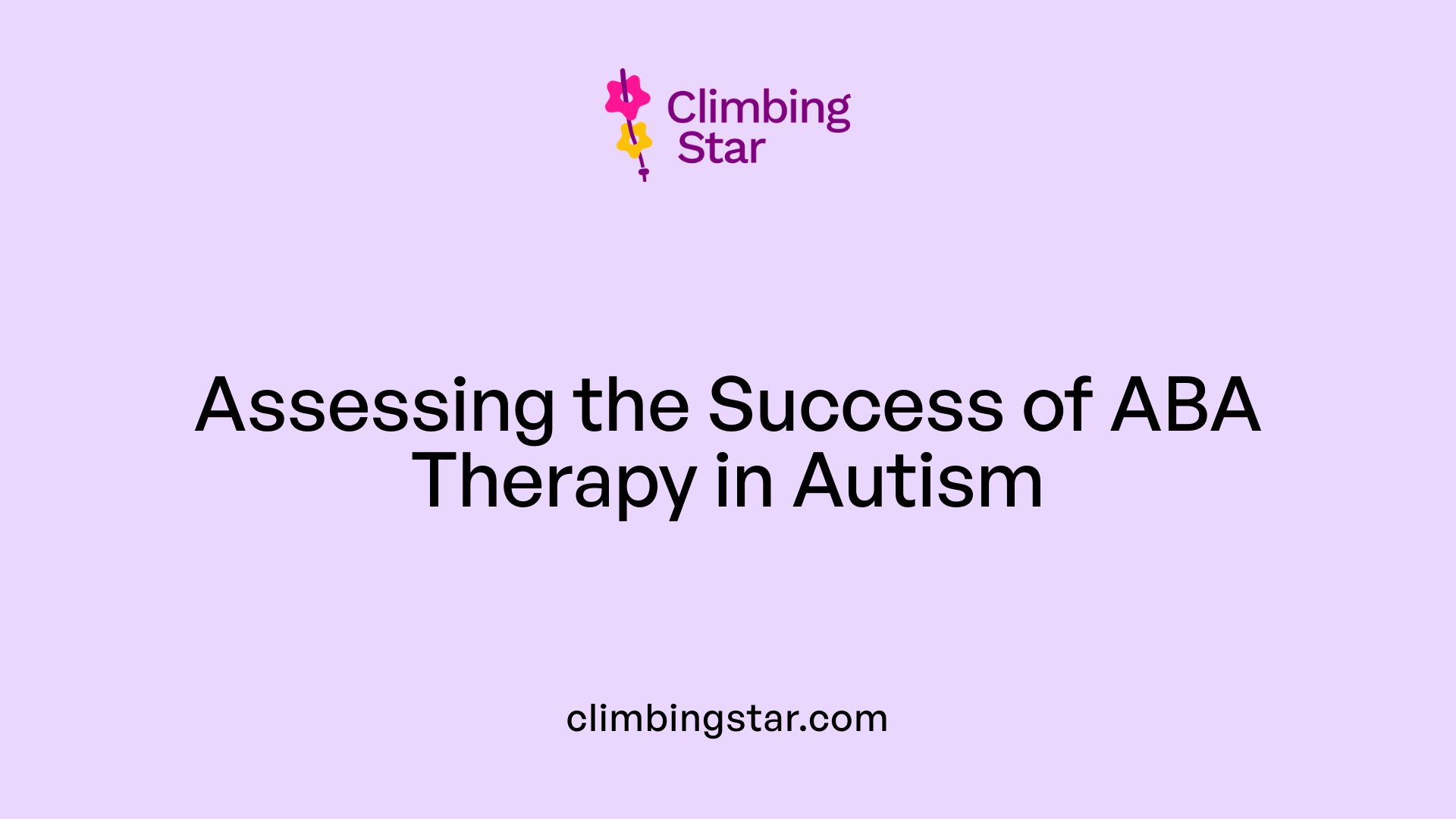
How is the effectiveness of ABA therapy measured in autism treatment?
Applied Behavior Analysis (ABA) therapy effectiveness is primarily gauged through careful observation and documentation of changes in specific, targeted behaviors. This process involves systematic data collection, where therapists track the frequency, duration, and quality of behaviors over time to identify progress or areas needing adjustment.
Standardized assessment tools play a crucial role in this evaluation. Instruments such as the Vineland Adaptive Behavior Scales, Third Edition (Vineland-3), help measure improvements in communication, daily living skills, socialization, and motor skills. Meanwhile, the Verbal Behavior Milestones Assessment and Placement Program (VB-MAPP) offers detailed insights into language and social skills development, guiding customized intervention plans.
Therapists and families also use resources like the Patient Outcome Planning Calculator, which assists in setting treatment goals and quantifying progress. By combining behavioral data with these standardized tools, clinicians can make informed decisions, ensuring that interventions remain effective and are tailored to the child's evolving needs.
In summary, the measurement of ABA therapy effectiveness involves:
- Continuous tracking of behavior frequency and duration
- Utilizing standardized assessments such as Vineland-3 and VB-MAPP
- Employing planning tools to assess and adapt treatment
This structured approach supports meaningful improvements in autistic children's communication and social abilities, enhancing their overall quality of life.
Evidence Supporting ABA Therapy for Autism
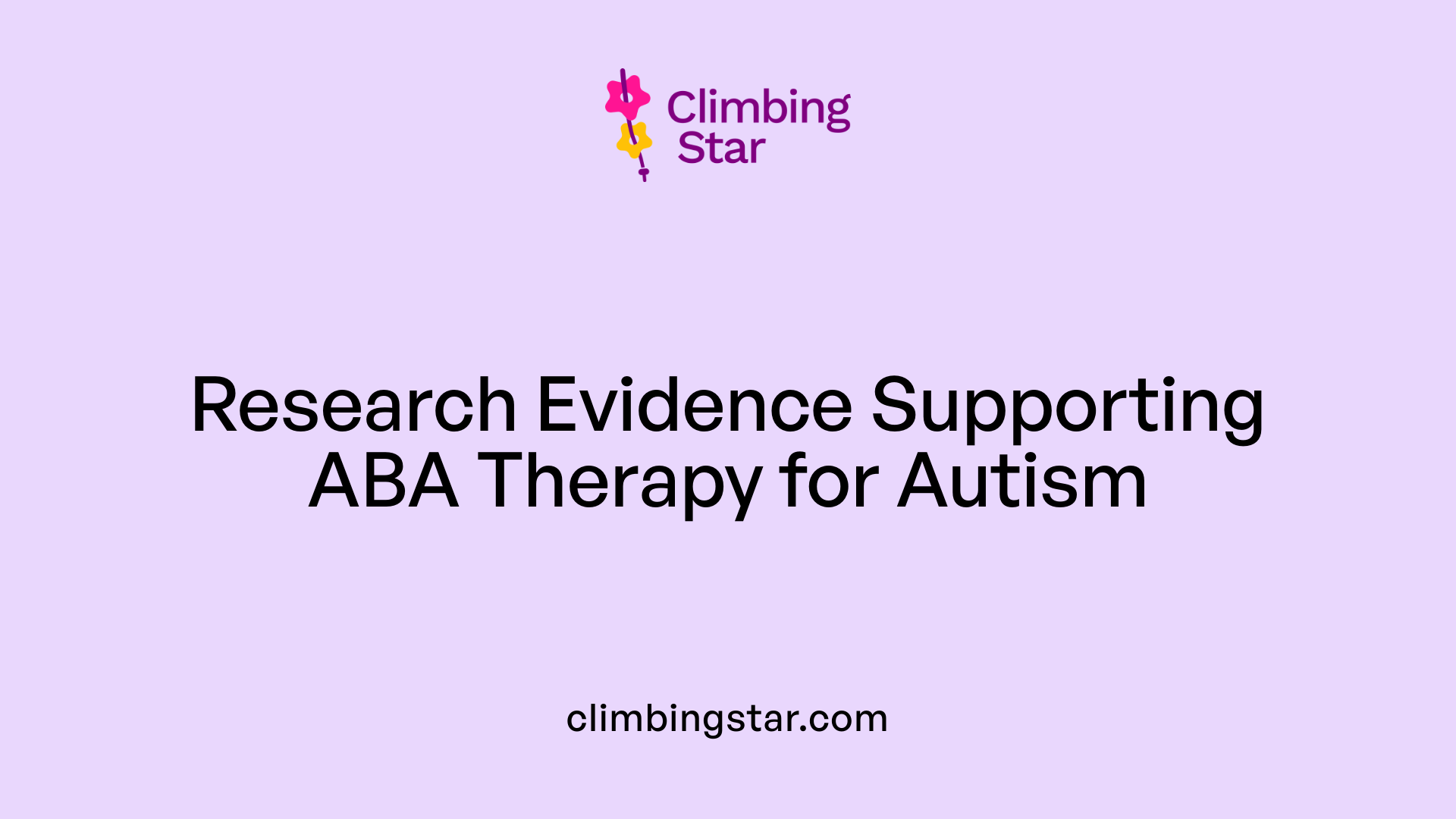
What evidence supports the use of ABA therapy for individuals with autism?
Applied Behavior Analysis (ABA) therapy is one of the most researched and widely used interventions for autism spectrum disorder (ASD). Numerous research studies, including meta-analyses, support its effectiveness in improving core aspects of autism. ABA therapy has demonstrated significant benefits in enhancing intellectual functioning, adaptive behaviors, communication skills, and social interaction abilities in individuals with autism. Furthermore, ABA has been shown to reduce problematic behaviors that can interfere with learning and daily functioning.
While gains in some areas, such as communication and social skills, can vary based on individual differences and therapy intensity, evidence consistently supports the positive impact of ABA. Early initiation and customization of therapy to the individual's unique needs tend to result in better outcomes.
Areas of improvement and limitations
ABA therapy primarily targets behavior modification through systematic reinforcement. It often helps children develop skills that promote independence and social inclusion. Improvement areas include:
- Language and communication development
- Social skills and peer interactions
- Adaptive living skills
- Reduction of repetitive and challenging behaviors
However, ABA is not a cure for autism; it is an intervention designed to aid skill acquisition and manage behavior. Some critics note that ABA may be intensive and resource-demanding, and the therapy’s effectiveness can depend heavily on the therapist's expertise and family involvement.
Endorsement by autism organizations
Leading autism organizations, including the Autism Society and the American Academy of Pediatrics, endorse ABA therapy as a foundational, evidence-based treatment for individuals with ASD. Clinical guidelines recommend ABA as a safe and beneficial approach that can significantly improve quality of life when applied early and consistently. This broad support underscores its role in comprehensive autism care.
| Aspect | Description | Notes |
|---|---|---|
| Intellectual functioning | ABA can enhance cognitive skills critical for learning and problem-solving. | Improved with early, intensive therapy |
| Adaptive behaviors | Helps individuals develop daily living skills for greater independence. | Tailored approaches are most effective |
| Communication | Focuses on improving verbal and nonverbal communication abilities. | Results vary by individual |
| Social skills | Encourages interaction and understanding of social cues. | Dependent on social context exposure |
| Behavioral challenges | Reduces behaviors like tantrums, aggression, or self-injury that may impede learning. | Requires consistent implementation |
Conclusion: Understanding Autism Beyond Simplistic Causes
Autism spectrum disorder results from complex genetic and environmental interactions rather than any single cause such as radiation exposure. Scientific evidence underscores the importance of genetic factors and prenatal environmental influences unrelated to radiation. Myths linking vaccines or radiation to autism lack credible evidence and can hinder acceptance and effective support for autistic individuals. Early intervention therapies like Applied Behavior Analysis remain cornerstone treatments supported by research to enhance communication, social skills, and quality of life. Increasing awareness of autism’s multifaceted nature, supported by evidence, will promote better health outcomes, reduce stigma, and empower individuals and families affected by autism.







